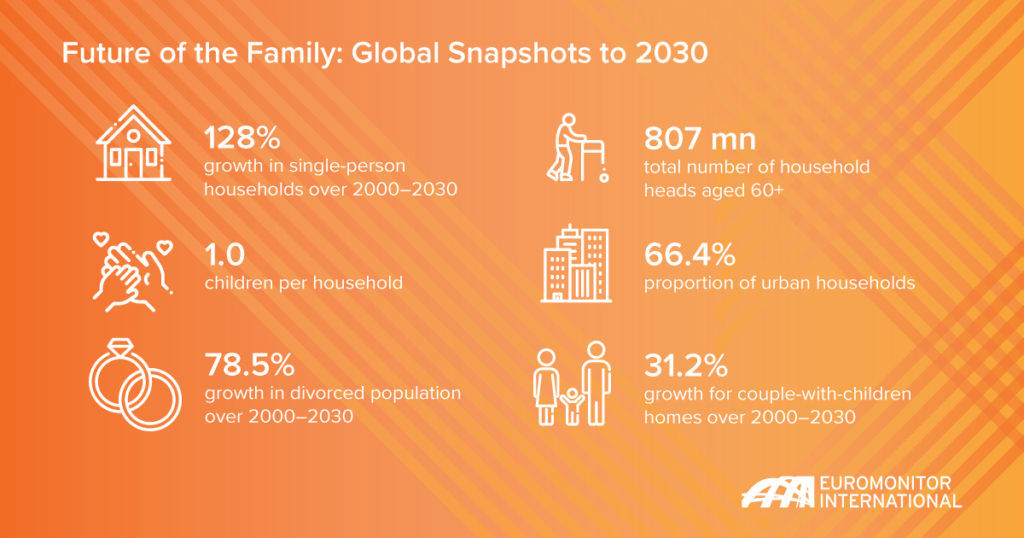The traditional definition of a family, two adults and children, is quickly changing. Millennials are refusing to be depicted as the “perfect family” living in a clean house with well-behaved children. Today we see a more modern type of family such as unmarried couples with children, gay and lesbian couples raising children, and more. But what is the impact of this trend? What are the opportunities or challenges for businesses?

Fewer Children
Most countries globally will see a decrease in the number of children per household between 2000-2030. This trend will be stronger in developing countries (seeing a -33.8% decrease) than in developed markets (-26.5%). As the number of childless-couple households surges worldwide, there will be opportunities for companies to target this large and growing cohort of couples living without children. Especially when more consumers are demanding businesses to be flexible in accommodating their needs, brands will have an opportunity to offer utility and convenience that meet their expectations.
Fractured Family
Divorce rates are surging globally and populations with a divorced marital status will be by far the fastest growing over 2000-2030. One of the factors behind rising divorces is that marriage is seen more as a social contract than a sacrament. The single-parent market is relatively untouched and therefore segments such as hotels and travel have slowly started adapting to this more common family type. The fact that parents tend to spend more money on a fewer number of children must not be forgotten here as well.
Evolving Habitats
A larger number of couples without children and singletons in megacities like Tokyo, London and Beijing, are looking for greater convenience and access to amenities and careers in urban areas. The small family/households are therefore creating a boom in apartments, which can be easily tailored to one or two inhabitants. Companies as a result of this smaller-home phenomenon will see demand increase for products such as small appliances, flatpack furniture, foldable goods and other products that cater to small rooms.
To learn more about the future of the family and households and how brands should adapt, download our white paper “A Look at the Future of the Family” or read the full report “Future of the Family”.
